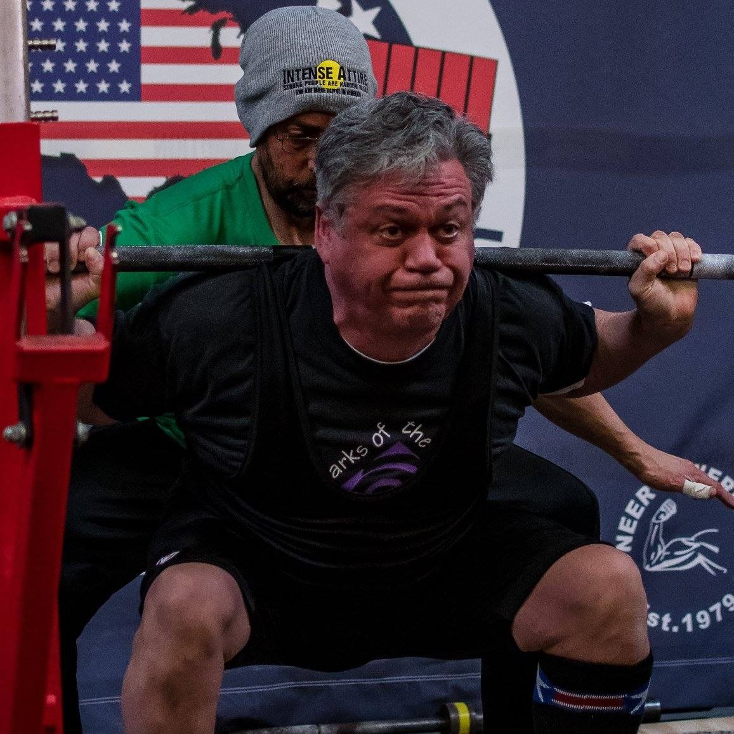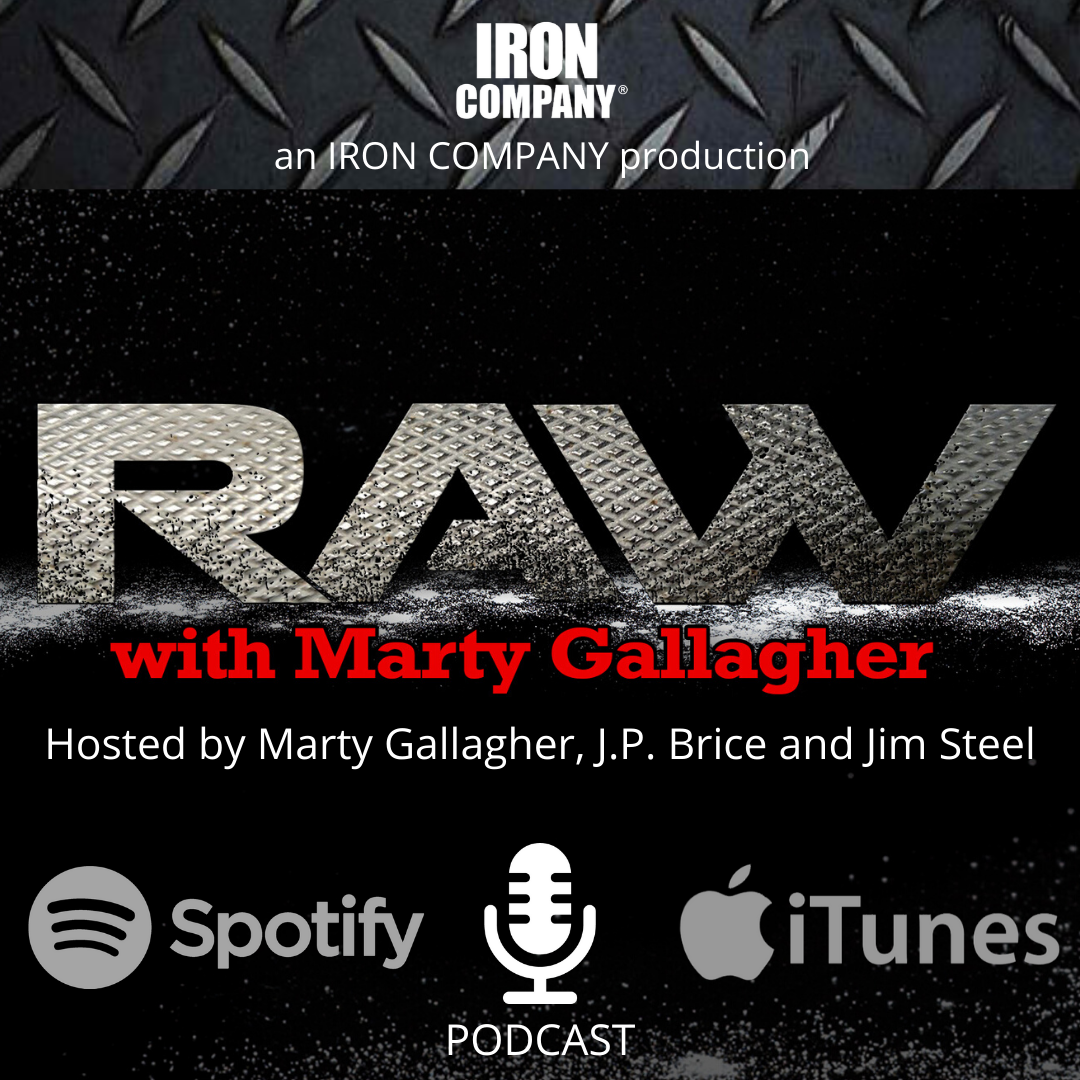
In Praise Of The Single Rep Set
Single rep sets build and strengthen both Mind and Body
Rep King Don “Bubbles” Berry (above) in the hole with 390 lbs.
I think it is a mistake for progressive resistance trainers, intent on increasing power and strength to purposefully avoid single rep sets, all-out maximum efforts. The proviso is – a certain type and flavor of all-out effort.
One of the classic tenants of progressive resistance training is the uncontested conventional wisdom that single repetitions are to be avoided at all costs, as if they were landmines. The thinking behind this orthodoxy is that single repetitions are inherently unsafe and totally unnecessary. Single repetitions most certainly can be safe and are absolutely necessary - if one is to actualize their strength potential.
One not-so-small point: if the benchmark in maximum strength is the single rep, done in the important progressive resistance movements, why would you avoid doing the benchmark? As world record holder and world powerlifting champion (and my training partner for six years) Mark Chaillet once quipped, “A powerlifter purposefully avoiding single reps is like a 100-meter sprinter refusing to run the 100-meters in practice. ‘I only run 80s, 100s might burn me out.’”
Mark had a great point: want to get better at singles? You got to do some singles. There is an art to single reps, it takes time and practice to master them. Folks are so petrified of limit attempts that rep charts were invented to allow the petrified to extrapolate their all-out single repetitions without ever actually having to do one. Most of these charts were woefully optimistic. You cannot generalize.
Psychologically, some athletes are better at sustaining an effort and some athletes excel at all out short bursts of effort. I knew an athlete that was capable of 405-pounds for 22-reps in the barbell squat. His best single rep was 485. Another friend, Chuck Deluxe, told me when he did 405 for 20, he squatted 600 for a single rep, raw, nothing other than a leather weightlifting belt.
Some guys are really good at reps and other guys are really good at singles: I would advise those good at single reps to counterbalance and include some high rep training. I would advise those that make a steady diet of higher reps to get some single reps under their belt.
Why is the single rep considered so dangerous? Because trainees use piss-poor technique and try way too much poundage. What is the best way to introduce single rep training into your current progressive resistance regimen? The first step to single rep mastery is to make sure your exercise techniques are correct. We are speaking of the important lifts, squats, front squats, various bench press variations, deadlifts, overhead press, power cleans, etc.
The key to staying safe when doing single rep maximum efforts is to forget everything you think you know about a lift. Be courageous, go back to zero: embrace light weights and ingrain proper techniques; use maximum range-of-motion on the power movements, stress the controlled negative, full ROM and perfect technique, exhibiting exquisite control – all of which combine to make light weights heavy. Get more using less by eliminating slop and inconsistencies in techniques…poundage be damned.
When you commence on your exploration of single reps sets, the negative must be controlled, the concentric explosive. Any grinding, any struggle on the concentric and that exercise is done. Grinding single rep sets after technique breaks down is asking for injury. The eccentric of every rep need be controlled, technically perfect followed by an explosive concentric. When technique evaporates and the lifter continues to struggle is when the injuries occur.
Having praised singles, and while they deserve a regular spot in the resistance rotation, I do not think they should be deified or overemphasized, any more than any of the other power rep range (5 and below.) single need be embraced, not be ignored. Our athletes (logically) spiral down to single reps when seeking to peak power and strength, be it a lifting competition, an athletic training camp or athletic event.
Our classical rep taper (the final four training sessions) finishes with the last three sessions reserved for single reps, a “dress rehearsal.” If the boys are going to being doing singles in competition logic dictates that they be practiced in the benchmark.
My friend Don “Bubbles” Berry is extremely adept at reps and not so good at singles. We put him on a remedial program of singles. Usually, mastery of the 5-rep set automatically leads to single rep mastery. Hall-of-fame powerlifters like Ed Coan, Doug Furnas, Hugh Cassidy, and Kirk Karwoski all swore by the five-rep set and because each had 5-rep mastery, each had incredible single rep prowess.
I got Bubbles Berry on sets of 5s in the squat, bench press, deadlift, and overhead press and he took to 5s like a duck to water. For him, mastery of 5s did not convert into a massive single rep – which it did for the superstars of power. Getting really good at 5s made Bubbles really good at doing 5s. Period.
When he squatted 375 for 5, raw, at age 60, weighing 198-pounds, I expected an age-group national record of 440-pounds for a single repetition. If one of my experienced lifters repped 375 for 5, they would most certainly be expected to hit 440 x 1 on a regular day and 460 x 1 on a good day.
Alas, despite his 5-rep prowess, he has yet to break the 400-pound barrier in competition. How is it possible for a man that can rep 375 x 5, each rep well below parallel, and be stuck at 395 x 1?? The answer is that Don has guts, grit, a high pain tolerance and is really good at establishing rhythm and momentum the deeper into a set he gets.
For Don, the first three reps are tougher than the last two reps, which is, of course, ass-backwards. He has an ability to slightly struggle on the first few reps of a 5-rep set and then flip a switch and develop a discernible rhythm, much in evidence on reps 4 and 5. His 5 rep sets are heroic, like watching a bungee leap or an Acapulco cliff diver.
As a Wing Chung instructor, he knows about getting smashed in the face and kicked in the groin: he takes pride in being able to stroll deep and long into the pain zone. He carried over that same fighting spirit into lifting. When the pain forces others to quit, Bubbles Berry is just getting started. Berry has built slabs of muscle with his five-rep mastery and that in and of itself is fantastic. Now he is on a mission to convert his 5-rep strength into a bigger single.
Mastery of single rep sets is physical and mental, singles in lifting must be equal parts technique and the explosive release of coiled energy. Learning to squat or deadlift expertly is like learning a pro-level golf swing, bat swing or tennis serve. You swing a bat, golf club or tennis racquet with all your controlled might, you release all your energy in a single, all-out swing that uses every muscle on your body. There is an optimal balance between power and control.
A progressive resistance single is done with control and precision: coiled power is released in an instant, like the ignition of an atomic bomb. After a resisted negative, the concentric is exploded. You don’t get five shots to get it right – you get one – get it right. Explode instantaneously – but only after a coiled eccentric. On the first rep of a deadlift you don’t even get that you must start from a dead-stop – no rolling start like in the squat or bench press.
At some point, if you keep increasing the poundage in a single-rep session, the explosiveness disappears and is replaced by grind. There is nothing wrong with grind and it is used to our advantage at different times and in different situations – but not now, not while learning how to perform technically perfect, crisp, explosive single rep efforts.
During a single rep training session would be constructed. One rep with explosiveness, you are done. Move on. Here is how a single rep session might look for a man with a 225-pound best single rep effort in the bench press.
- Bench press, touch and go style: 125x10, 145x5, 165x1, 185x1, 205x1, 215x1, 225x1*
*225 x 1 slowed – end singles
- then - 195x5 wide-grip bench press, paused reps
- then - 185x5 narrow-grip bench press, touch-and-go
- then – triceps, 6-8 sets, weighted dips, nose-breakers, pushdowns, etc.
Over time and with repetition, singles become more explosive and easier as you learn to harness maximum coiled tension before exploding. Single rep mastery infuses the trainee with an explosiveness that transfers to any sport or athletic activity.
There is a mental component that accompanies single rep training. The athlete must learn how to explode, instantaneously, fully, completely commit, mentally and physically, mind and body melding in the all-out effort. You must get it right immediately and instantly. No redo’s, mulligans, or makeovers.
Coil the eccentric and explode the concentric. No need to stroll deep into the pain zone, you won’t be there long enough to experience pain. A single-rep set is over in 3 to 5-seconds (or less.) Don’t expect to become a master of the explosive single overnight: make haste slowly. Singles don’t suffer fools lightly and singles teach with a big stick. To paraphrase Blue Oyster Cult (“More Cowbell!) Don’t fear the single!
About the Author
As an athlete Marty Gallagher is a national and world champion in Olympic lifting and powerlifting. He was a world champion team coach in 1991 and coached Black's Gym to five national team titles. He's also coached some of the strongest men on the planet including Kirk Karwoski when he completed his world record 1,003 lb. squat. Today he teaches the US Secret Service and Tier 1 Spec Ops on how to maximize their strength in minimal time. As a writer since 1978 he’s written for Powerlifting USA, Milo, Flex Magazine, Muscle & Fitness, Prime Fitness, Washington Post, Dragon Door and now IRON COMPANY. He’s also the author of multiple books including Purposeful Primitive, Strong Medicine, Ed Coan’s book “Coan, The Man, the Myth, the Method" and numerous others. Read the Marty Gallagher biography here.



